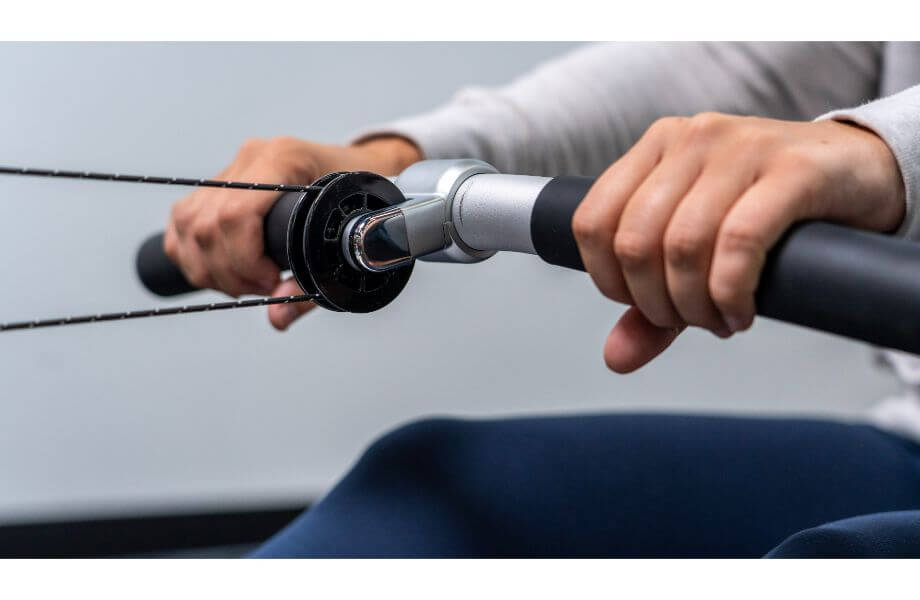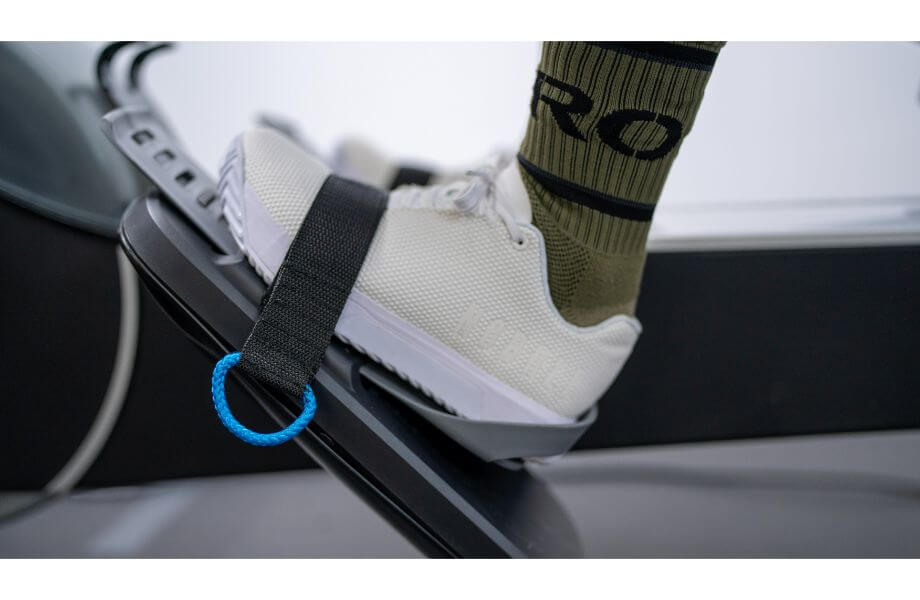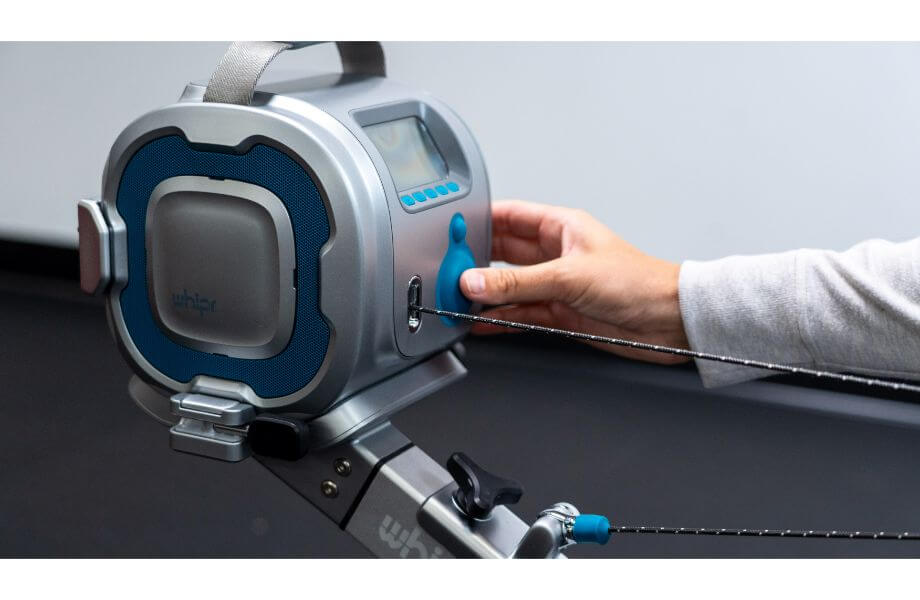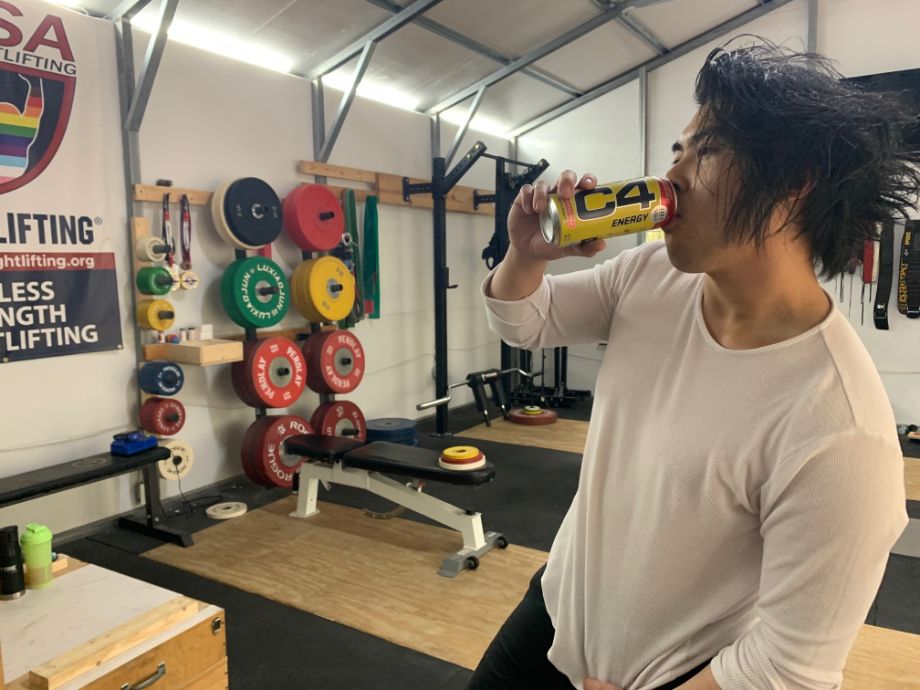We test and review fitness products based on an independent, multi-point methodology. If you use our links to purchase something, we may earn a commission. Read our disclosures.
Rowing is largely underutilized, but it’s arguably one of the best forms of cardio exercise.
Treadmills, ellipticals, and exercise bikes get a lot of time in the limelight, but there’s another piece of cardio equipment that should most definitely be in your regular rotation: a rowing machine.
Rowing machines offer serious aerobic exercise while also engaging all the major muscle groups, including your core. Rowing machine workouts give you efficient full-body work with minimal impact. Here, we’ll break down all the rowing machine benefits you should know.

Medical disclaimer: This article is intended for educational and informational purposes only. It is not a substitute for health or medical advice. For medical advice, contact an appropriate healthcare provider.
11 Benefits of a Rowing Machine
Aside from improving your cardiovascular health and endurance, rowing can increase upper- and lower-body strength, contribute to weight loss, and even reduce your stress levels beyond boosting your endorphins.

1. Rowing Improves Cardiovascular Health
Because it’s primarily a cardiovascular exercise, rowing can help improve your heart health. Like other forms of cardio, rowing can increase cardio output and make your entire circulatory system more efficient. It can also reduce blood pressure and blood lipid levels, which can translate to a lower risk of heart disease, if you row regularly.

2. Rowing Increases Cardiorespiratory Endurance
In addition to improving your overall cardiovascular health, exercise like rowing also increases your cardiorespiratory endurance, or how well your heart, lungs, and muscles can keep up with a high-intensity exercise. When you first start out, you may only be able to go for a couple minutes at high speed (if that), but the more you row, the longer you’ll be able to keep up your pace.
While all cardio exercises have this effect, rowing has a distinct advantage: It’s one of the few exercises that engages all of the major muscle groups, according to Caley Crawford, NASM-certified personal trainer and Director of Education for Row House, who adds that this activation of these large muscle groups can also have a positive effect on the cardiovascular system.

3. Rowing Increases Muscular Endurance
Though rowing is typically seen as a type of cardio exercise, it doubles as strength training, too. Rowing can increase muscular strength and endurance, or the ability of your muscles to exert force during exercise.
In other words, the more you row and develop the associated muscles, the longer you’ll be able to continue exercising before you reach muscle fatigue. That’s because rowing utilizes all the major muscle groups, thanks to the pushing and pulling motions against the resistance of the flywheel.

4. Rowing Can Be Meditative
The repetitive motion of rowing can also help relieve stress. “The rhythm involved in rowing is very meditative and not only releases tension in muscles, but also relieves [mental] tension, increasing mental clarity and focus,” says Crawford.
Like other forms of exercise, rowing also releases endorphins (neurochemicals that can boost mood and help reduce pain perception) while also reducing cortisol, the primary stress hormone. While any exercise can have a positive effect on your mood, high-intensity interval training (HIIT), which you can easily accomplish on a rowing machine, seems to trigger the most significant boost in endorphins.
5. Rowing Is Good for Joint Health
Because rowing is a low-impact workout, it’s gentler on your joints than higher-impact exercises, like running.
Rowing can condition your joints and muscles without putting excess strain on them, and it can help increase flexibility and minimize stiffness since it involves a wide range of movement, according to Crawford.
She adds that with proper form and technique, one benefit of a rowing machine is that it also leaves little room for injury and achy knees, ankles, and feet—a far cry from the high-impact pounding of running or plyometrics.

6. Rowing Increases Lower-Body Strength
When using an indoor rowing machine, you want to mimic the technique that’s used on the water. That means utilizing a combination of pushing off with your legs and pulling with your arms.
The push motion, which is the first step in proper rowing form, engages the quads, glutes, and hamstrings, providing an effective lower body workout that can ultimately increase your lower-body strength over time.

7. It Also Increases Upper-Body Strength
After the push comes the pull. As your legs reach full extension, you’ll want to lean back, creating a 100-degree angle between your legs and core. When you’re just about in the full leaning position, you’ll pull on the rowing machine handle, relaxing your shoulders and keeping your arms straight and in line with the flywheel.
Since the flywheel provides resistance on the pull motion, this movement activates your delts, biceps, triceps, and pectoral muscles. It also engages your back muscles (latissimus dorsi, trapezius muscles, and rhomboids) and works your abdominal muscles and obliques, aka the core.

8. Rowing Is an Efficient Workout
If you’re looking for efficiency, rowing is the way to go.
“The effort required to row prevents you from slacking during your workout, allowing you to get impressive results from rowing for a short time,” says John Gardner, a NASM-certified personal trainer and the CEO and Co-Founder behind Kickoff, a remote personal training platform.
“In fact, just 30 minutes of [steady-state] rowing will burn 300 calories depending on your weight and intensity,” he says.
If you incorporate principles of HIIT, you can get an intense workout in less than 20 minutes. Combining rowing sprints with cross-training exercises, such as squats or push-ups, is a quick and effective way to build muscle and stamina simultaneously.

9. Rowing Is Accessible to All Fitness Levels
Because rowing is low-impact and easy to pick up, once you’ve had a little practice perfecting your form, it’s a cardio workout that’s accessible to all fitness levels. There’s no huge learning curve and you don’t have to be in tiptop shape to start.
Rowing is an excellent workout for beginners since it’s an easy way to get in a quick full-body workout, according to Crawford, who says it’s best to start out slowly. “Maybe start by rowing for 3 to 5 minutes just so you can get your technique down. Once you nail the technique, that’s when a beginner can begin rowing for longer periods of time.”
10. Rowers Are Versatile Cardio Machines
According to Gardner, rowing is a versatile workout that can act as high-intensity resistance training and cardio all at once. “The movement is very challenging and works numerous muscles together, allowing you to maximize your results,” he says.
“The pull action makes it an excellent resistance training workout, and because you can make it your own, you can use HIIT intervals such as 20 seconds maximum rowing speed, 10 seconds rest, or 50 seconds 80% maximum effort and 10% minimum effort.”

11. Rowing Burns Calories and Can Help With Weight Loss
Because rowing ergometers allow you to get a full-body workout in, they’re effective calorie-burners, too.
“You no longer need to spend all your time on cardio machines to burn a lot of calories,” says Crawford. “By rowing for about 30 minutes you can burn up to 300 calories. By rowing, for about 60 minutes you can burn up to 600 calories.”
But it’s not just about the calorie burn. One study compared the rate of fat oxidation (or fat burning) between cycling and rowing. This study found that even at the same rate of intensity and calorie burn, rowing led to higher rates of fat oxidation in active men and women. However, it’s important to remember that nutrition is also key to long-term successful weight loss.

How to Use a Rowing Machine
When it comes to using a rowing machine, proper technique is everything. There are four main positions in a full rowing motion—catch, drive, finish, and recovery—and timing each movement correctly is the path to the ideal rowing form.
The catch is the starting position, or the beginning of your rowing stroke. The drive is when you use your legs to push off and start your stroke. The finish is when you lean and pull against the flywheel with your arms. Recovery involves bending your arms, releasing resistance, and returning to the starting position, or catch, to get ready for the next stroke.
In all positions, “You want to sit tall, engaging your core muscles, and have your toes pointing away from you to start,” says Crawford. “Don’t bend your back; you want to rock your hips and focus on extending your chest.”
If you want to dive deeper into how to use a rowing machine, our in-depth guide on how to use a rowing machine with the correct form and technique is all you’ll need (and you can get a free total body workout while you’re at it).
Rowing Machine Benefits FAQs
What is the best rowing machine?
The best rowing machine is the one that makes sense for your home gym and your fitness routine. We recommend the Concept2 Model D Rower as the best rowing erg for CrossFit and the Hydrow Connected Rower as the best interactive rowing machine. The rest of our favorite rowers are detailed in our guide to the best rowing machines.
How many calories can you burn using a rowing machine?
The number of calories you burn on a rowing machine largely depends on your individual stats, like how much you weigh and the amount of lean muscle you have. Your intensity and duration will also play a role in the specific numbers.
That being said, one of the big benefits of rowing machines is that you can torch about 200 to 300 calories (dependent on your body composition) by rowing for 30 minutes at moderate intensity, according to Harvard Health Publishing. If you pick up the pace, that calorie burn jumps to about 250 to 450 calories per half hour.
Is rowing good for burning body fat?
Because rowing can boost fat oxidation directly, it’s an excellent way to burn body fat when combined with proper nutrition and a well-balanced lifestyle. Crawford points out that rowing also helps strengthen your entire body and improve your cardiovascular system, two things that can contribute to weight loss when part of an overall healthy lifestyle.
What can a rowing machine do for your body?
Rowing machines provide a whole-body workout that can help improve cardiovascular health, and cardiovascular and muscle endurance, while also strengthening your upper and lower body.
How long should I row?
It depends on your fitness level and your overall goals.
“For beginners, it’s best to perform rowing machine exercises three times per week, allowing a rest day between workout days to give muscles a chance to recover,” says Crawford. “If you want to raise your endurance it’s best to row three to five times a week, but that’s more for those who have been rowing for longer periods of time.”
As for duration? Thirty to 45 minutes is likely a good goal for most people (if rowing is your primary mode of exercise), but it depends on what you’re trying to achieve fitness-wise.
Is 30 minutes of rowing enough?
Thirty minutes is enough for most people to reap the general health benefits of rowing. If you row for 30 minutes, five days a week, you’ll hit 150 minutes of weekly exercise as recommended by the Department of Health and Human Services’ Physical Activity Guidelines for Americans.
Further reading

In our C4 Energy Drink Review, find out how nutrition experts feel about this ready-to-drink pre-workout. Read more

Flex Wheeler's Back Widow is one of the most versatile cable machine attachments ever created. It's great as a "back blaster" for lat pulldowns and rows, but works just as well for curls and tricep work. In addition to that, it doubles as a deadlift jack and also works as a landmine. Honestly, unless you're conscious of all it does, you'll forget just how often you can use it. It is expensive and we do recommend it, but only to those that will use it's various capabilities and don't want to take up space with a ton of different attachments. Read more

In this NordicTrack VU 19 review, we look at a lightweight, compact upright bike that caters to beginners more than it does to competitive athletes. Read more

Thinking about buying a used treadmill? Learn about this solid option with our NordicTrack C910i Treadmill review. Read more

